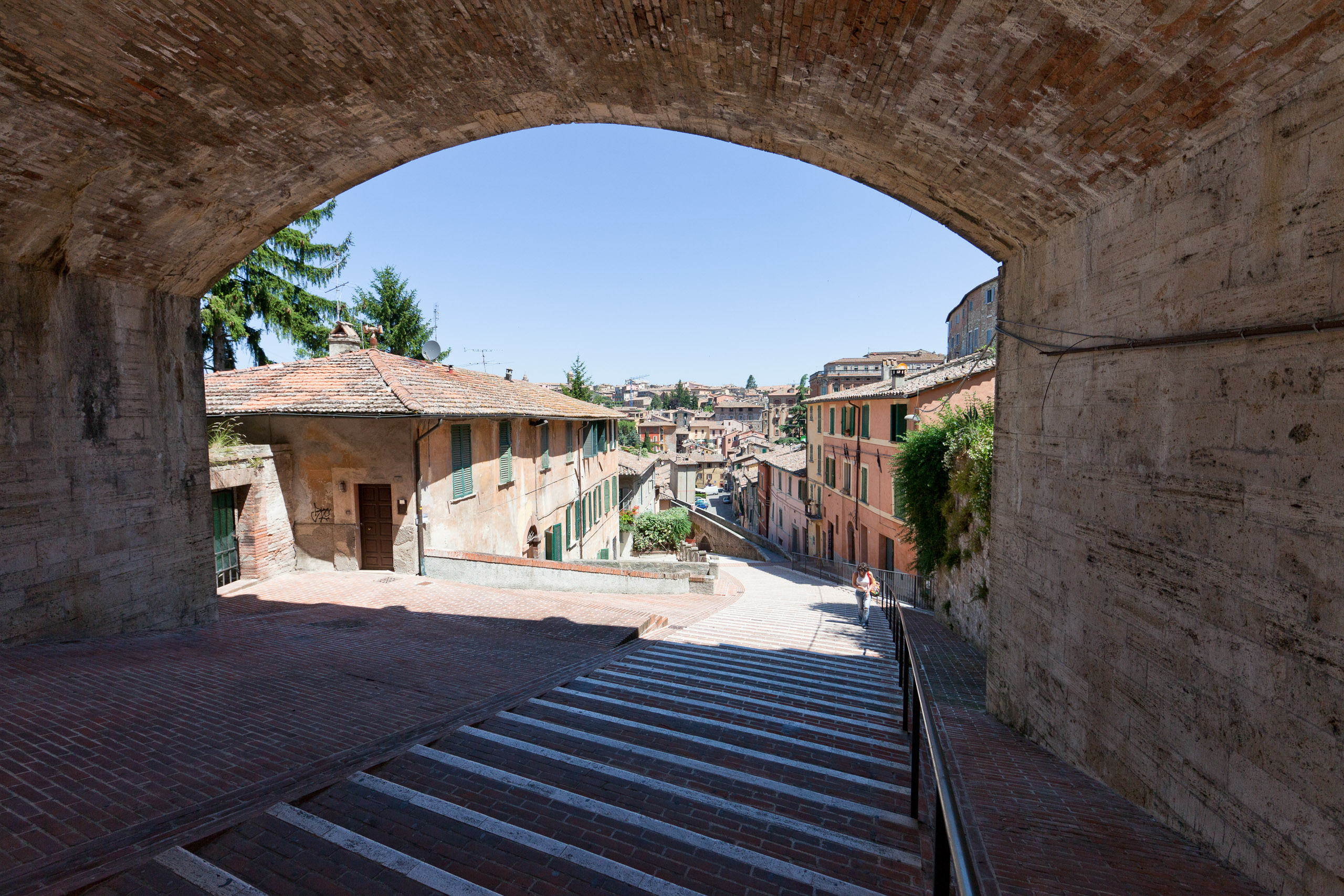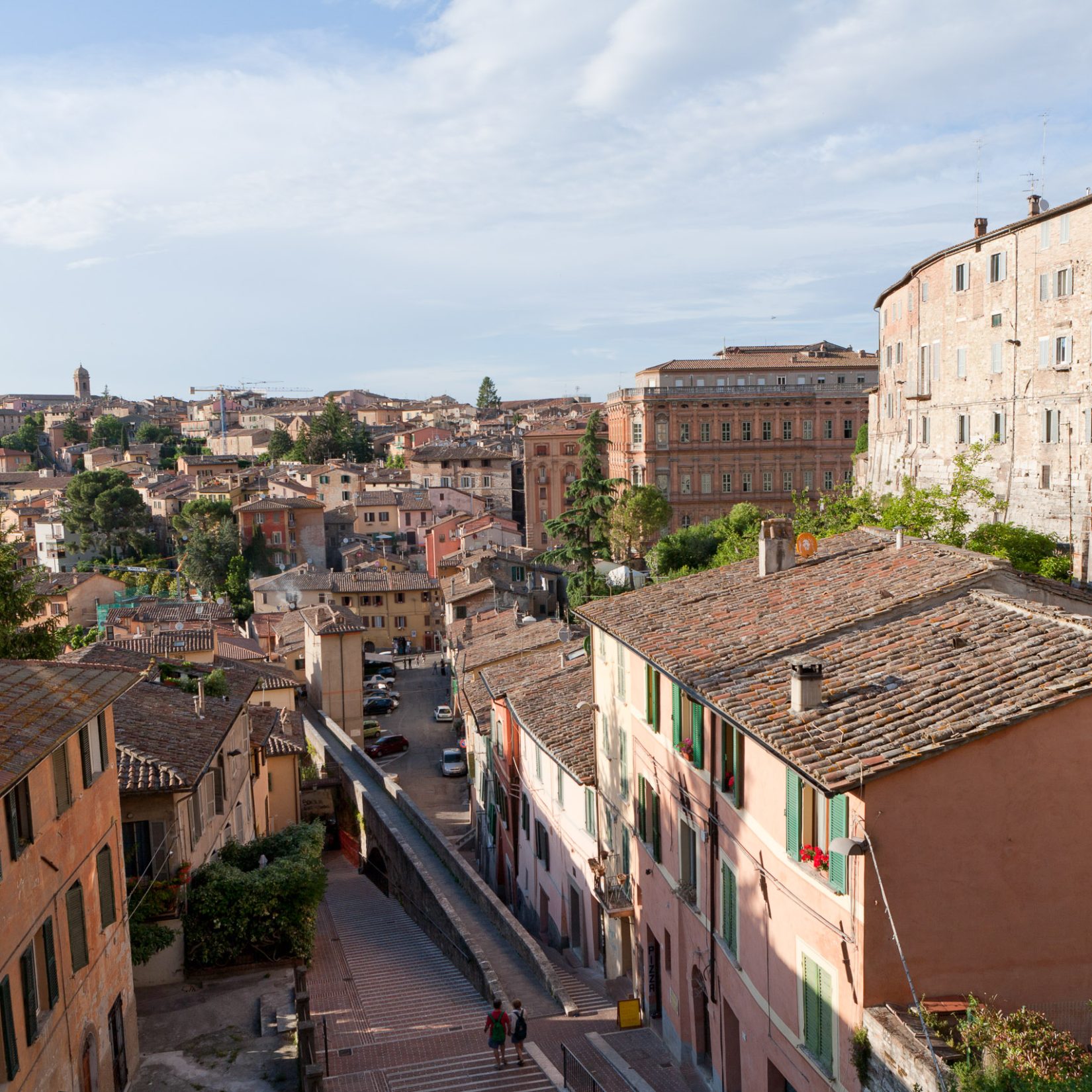
The Medieval Aqueduct is one of the most evocative places in Perugia. Crossing Via dell’Acquedotto is a truly unique experience: with its picturesque narrow pathway, it provides one of the most popular and captivating views of the city.
Originally a Roman structure, the aqueduct was heavily restored in the Middle Ages. The structure was designed by architects Fra Bevignate and Boninsegna da Venezia in the late 13th century. It took several years to build. The project consisted in the creation of a four-kilometer path, to connect Monte Pacciano’s springs with Perugia’s city center. However, due to the elevated position of the city, it was extremely difficult to move the water uphill.
After years of study, and thanks to the use of a static pressure duct, the water arrived for the first time to Fontana Maggiore in Piazza IV Novembre in 1278.
The Aqueduct fell into disuse in the late 19th century and it was replaced with a modern one.
The last stretch of the aqueduct, which reaches the city, was turned into a picturesque pedestrian walkway. The aqueduct structure in the countryside to the North meanwhile, was abandoned, and now only ruins remain.
In the present day, Via dell’Acquedotto connects the district of Porta S. Angelo with the historic city. It is located just steps away from Piazza IV Novembre, and the pedestrian walkway is always accessible. The route ends in Via Appia, with a last underground, probably Etruscan, stretch which once reached the Fontana Maggiore. It ends in the archaeological area of the Cathedral. It can only be visited on specific occasions.
Discover Perugia in a new and unique way through Articity tours! Articity Tours are designed for those who want to discover and visit Perugia, getting in touch with the people, the culture, the tradition and the local talents..
Information
The Aqueduct is located just steps away from Piazza IV Novembre. The pedestrian walkway is always accessible.



